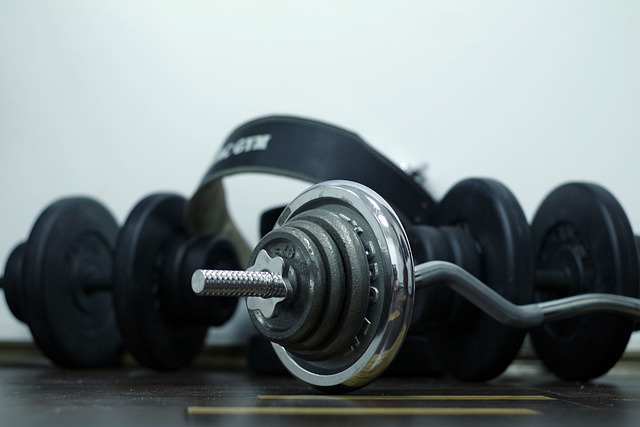Interval training is popular because working at higher levels of intensity helps you build endurance faster and burns more calories, which is fantastic for weight loss.
Not only that, but it adds variety to your training. Instead of staying at the same pace throughout the workout, you mix things up, making the workout appear shorter than it is.
If you’re new to exercising, you’ve definitely heard of interval training, which involves pushing yourself beyond your comfort zone for a set period of time and then resting.
Precautions
If you’re a newbie, the following workout is a terrific place to start. It lasts 21 minutes and includes work periods that will challenge you somewhat beyond your comfort zone. It means you won’t be out of breath or miserable but will just be pushing yourself a little harder, which is the ideal method to develop a strong cardio foundation for becoming healthier and reducing weight.
Check with your healthcare provider if you are completely new to exercise, if you are managing a medical condition, or if you are returning to exercise after pregnancy or injury. You may need to follow personalized guidelines, and your provider can provide safety suggestions.
Equipment
The workout is demonstrated on a treadmill with speed and incline variations, but you may use any machine of your choice or do it outside. The elliptical machine or stationary bicycle are other wonderful options, but you can also walk, jog, or ride outside.
How To Do Interval Training
If you’re new to exercise and wondering if you can undertake interval training, the answer is yes. Interval training might be beneficial to beginners. Not only can you mix up your workouts to make them more enjoyable, but you also offer your body an opportunity to become used to working a little harder.
As a result, you just have to work hard for a brief period of time, making it a more comfortable workout. That’s far superior to struggling through a long workout or attempting to work at a high intensity for the duration of your session. Advanced exercisers can work at a high intensity, entering the anaerobic energy zone where oxygen is scarce.
Try to get used to this terminology so you can follow the interval instructions.
Work set: For each ‘work set,’ use your machine’s settings (incline, speed, resistance, ramps, etc.) to build intensity. Increase your speed or discover a slope outside. You should push yourself beyond your comfort zone, but not so far that you become dizzy or lightheaded. It’s just a bit unsettling.
Rest set: Lower those same settings for each ‘test set,’ or slow down/go downhill for outdoor training until you’re back to a moderate speed. Before the next work set, you should be entirely recovered.
RPE: On a scale of 1 to 10, the rating of perceived exertion (RPE) lets you keep track of your intensity. Maintain an RPE of 4 to 5 throughout rest sets. Maintain an RPE of 5 to 6 during work sets. The difference between work and rest sets is little; you simply want to work a little harder during the work sets. If you do not want to use RPE, You can also monitor your workout intensity with a target heart rate calculator and/or the talk test.
Finally, remember to adjust the speed and intensity based on your fitness level. If you aren’t ready for the higher level, it’s best to start at a lower intensity. Similarly, if this isn’t enough for you, you can speed up or increase the inclination or resistance.
Here is an example of Interval time, Activity, and RPE level
- 5 min: Warm up at a slow speed. Simply begin slowly and gradually raise your intensity by going faster, increasing the incline, or increasing the resistance. Now is the moment to prepare your body for what is to come. Level 3-4
- 3 min Rest set: Increase your speed from warm-up and inclination by 1%. Maintain a steady pace. You should feel like you’re working out, but you should also be able to talk. Level 5
- 1 min Work set: Raise incline 1-3% to increase effort. You should notice a modest increase in intensity, as well as faster and more difficult breathing. If you’re not feeling any difference, you can increase the incline. Level 6
- 3 min Rest: Reduce your speed and incline to return your heart rate to a comfortable level. It does not have to be identical as the last rest set. Level 5
- 1 min Work set: To increase the effort, increase your speed by 3-5 increments and your slope by 1-2%. Adjust these values to work at the recommended intensity. Level 6
- 3 min Rest: Reduce your speed and incline to return your heart rate to a comfortable level. Level 5
- 5 min: Slow down and incline to a very comfortable rate for your cool down. Level 3-4
When you’re ready to go on, simply add another work set/rest set pair. If you wish to continue, add an extra set to each session or just one workout every week.
Use interval training with different activities to mix things up, enhance your endurance, and burn more calories. This progressive increase in workout duration will allow you to grow gradually into better shape without working so hard that you begin to avoid working out.
The Top 10 Interval Training Exercises
The benefit of incorporating interval training into your workout program is that you may quickly increase your strength and endurance. You can create a 20- to 30-minute workout by combining these excellent interval exercise options.
Start with a 5-minute warm-up before moving into brief high-intensity intervals for a quick and effective workout. Each session can last anything from 30 seconds to 2 minutes, with a minute of easy walking in between. Go for around 20 minutes and then relax.
Jump rope, stair running, burpees, shuttle sprints, spinning, dumbbell squat to press, pull-ups, push-ups, walking lunges with weights, and v-sits are all interval exercises with instructions and benefits.
Jumping Rope
Grab a jump rope, and you’ll have an easy, low-cost way to incorporate high-intensity interval training into your workout program. Jumping rope, when done correctly, can enhance cardiovascular fitness, balance, agility, and strength.
Perform single hops for a minute or two to feel the burn while burning calories.
Stair Climbing
Running stairs is a terrific interval workout that requires little time or equipment (all you need is a set of stairs). Running has similar cardiovascular advantages. Stairs are an excellent strategy to increase sprint power.
Burpees
Burpees are regaining popularity. This simple but effective exercise trains your entire body, particularly your cardiovascular system.
Begin by standing tall, then crouch down and place your hands in front of you on the floor. Kick your feet back into a push-up stance as quickly as possible. If you want a truly rigorous exercise, do a push-up while you’re here. You can alternatively simply return your feet to the starting position, jump high in the air, and repeat. If you want to make sure you’re doing it correctly, watch a burpee video.
Shuttle Races
Shuttle sprints are a common agility and speed workout performed by athletes in stop-and-go sports such as soccer, hockey, basketball, and tennis.
Set up two markers about 25 yards apart to practice shuttle sprints. One repetition is to sprint from one marker to the other and return. Attempt to make ten sprints at once. Shuttle sprints can be made forward, front and backward, or side-to-side.
Spinning
If you join a spin class, you’ll most likely do some high-intensity spin intervals. Yet, you may use your home trainer or go to a spin class during the off-season to build your own interval program. When combined with other bodyweight exercises, the workout will fly by.
One of the most popular kinds of indoor exercise is riding a stationary or spinning cycle, which provides a low-impact, high-intensity cardiovascular workout while also building muscle and endurance.
Squat to Press with Dumbbells
Weights are a simple technique to increase the intensity of an exercise. Mix a dumbbell squat with an overhead press for a full-body workout that works your arms and shoulders, as well as your core, quadriceps, and glutes.

Push Ups
Pull-ups require some basic equipment or some creativity (for example, go to a playground or find a sturdy low-hanging tree branch), but they’re a terrific, straightforward technique to increase upper body strength.
Pull Ups
Standard push-ups are a simple, no-equipment total-body workout that improves upper-body and core strength.
This compound exercise, when performed slowly, engages muscles in the chest, shoulders, triceps, back, abs, and hips.
Weighted Walking Lunge
Walking lunges will help you gain endurance, strength, and balance.
Almost every sort of athlete will benefit greatly from this exercise.
If completing a walking lunge with a weight overhead feels unnatural, start with a broomstick or an empty barbell until you feel more comfortable with the technique.
Abdominal V-Sit Workout
End with a minute or two of ab exercises before calling it a day. The v-sit is a challenging core exercise that works the rectus abdominis and external and internal obliques. This exercise works the hip flexors as well.
To Conclude
Interval training follows the adaptability concept. Interval training causes various physiological changes, including enhanced cardiovascular efficiency (the ability to transport oxygen to working muscles) and tolerance to lactic acid buildup. These modifications result in increased performance, speed, and endurance.


